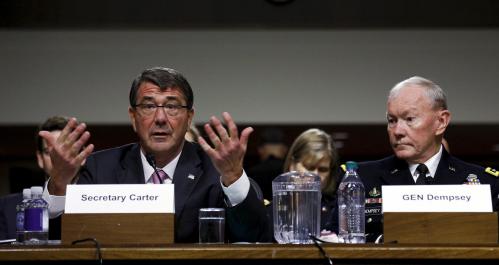This week’s last-minute deal to avert the fiscal cliff was welcome at one level, but it did little to address federal spending—including defense spending. Had Mitt Romney won the presidential election, we might now be talking about modest increases to the Pentagon budget. As things stand, however, the real debate is over how much more to cut, beyond the mid-sized reductions—about $350 billion if you measure against standard Congressional Budget Office baseline—already imposed on core, non-war defense spending by the 2011 Budget Control Act. Sequestration—like the Simpson-Bowles and Rivlin-Domenici deficit reduction commissions of 2010—would cut another $500 billion or so over ten years.
The Obama administration’s current military plan, which incorporates the BCA cuts but not those from possible sequestration—will scale down the military from about 1.5 million active-duty uniformed personnel to its pre-9/11 total of 1.4 million, or two-thirds the Cold War norm. It chips away at modernization programs but preserves most major ones, with one or two notable exceptions. It levels off various forms of military pay and benefits, but most troops will continue to be compensated better than private-sector cohorts of similar age, education, and technical skill. It also holds out ambitious hopes for efficiencies from various unspecified reforms that would save $60 billion over a decade, and optimistically assumes that weapons systems will be delivered at projected costs.
Conceptually, the Obama approach is built on time-tested principles of American defense policy that have been modified only modestly in recent years. The Persian Gulf and Western Pacific remain the two principal theaters of overseas concern—though the administration is seeking to emphasize the broader Middle East/Gulf region somewhat less and, through its policy of “rebalancing,” the Pacific somewhat more. A two-war capability of sorts is retained, even if two full-scale simultaneous regional operations are assessed as less likely than before, and large-scale stabilization missions also less likely. Of course, these latter assumptions must be tempered by the fact that possible enemies get a say in our decisions too. In the short term, force planning must also account for the ongoing operation in Afghanistan, where nearly 68,000 American troops remain, and possible operations against Iran’s nuclear facilities.



Commentary
Op-edCut Out of the Conversation
January 4, 2013